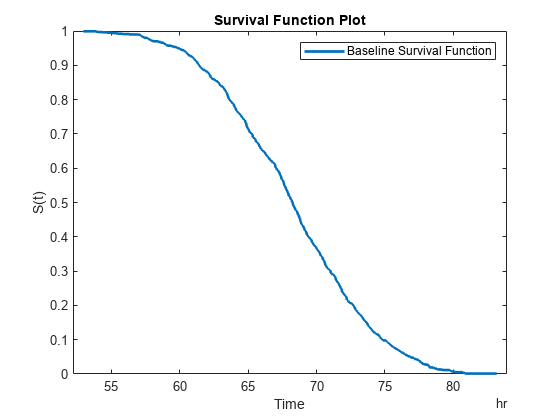plot
Plot survival function for covariate survival remaining useful life model
Description
plot( plots the baseline survival
function of the fitted covariate survival model mdl)mdl against the
life time value for which it was computed. The plot data is stored in the
BaselineCumulativeHazard property of
mdl.
plot(
plots the survival function computed for the covariate data in
mdl,covariates)covariates. To obtain the survival function, the hazard
rate is computed using the covariates and combined with the baseline survival
function.
Examples
Input Arguments
Version History
Introduced in R2018a

